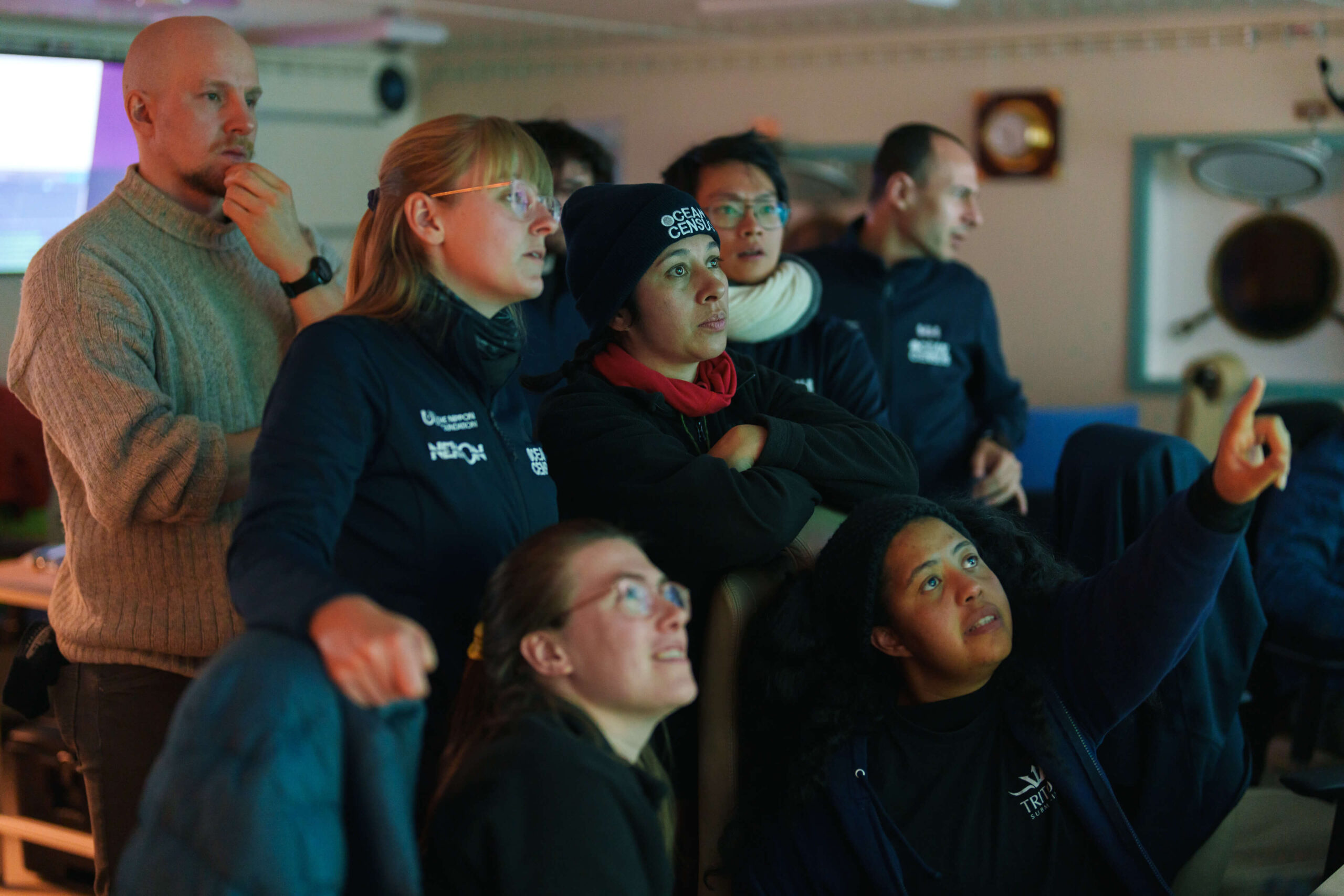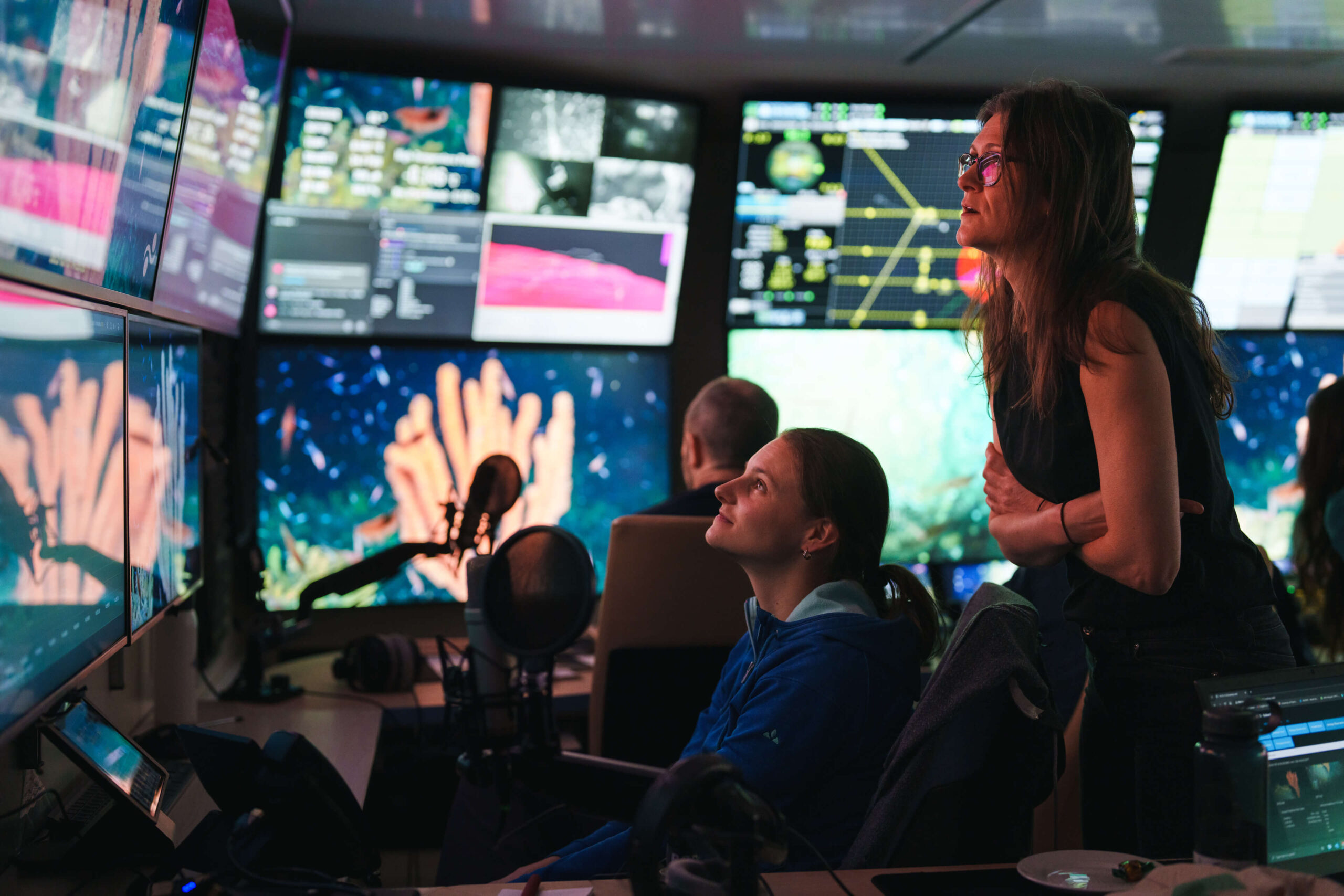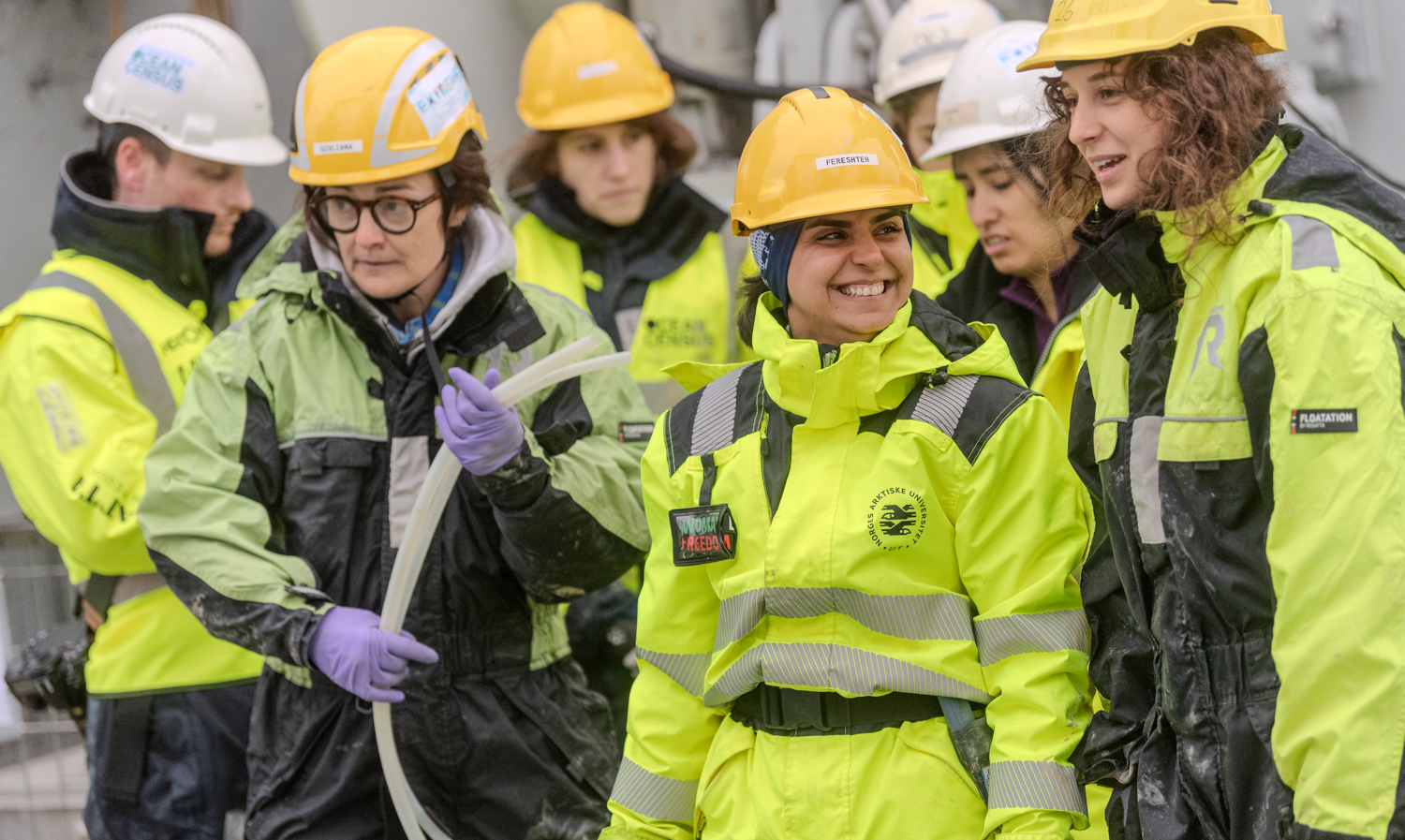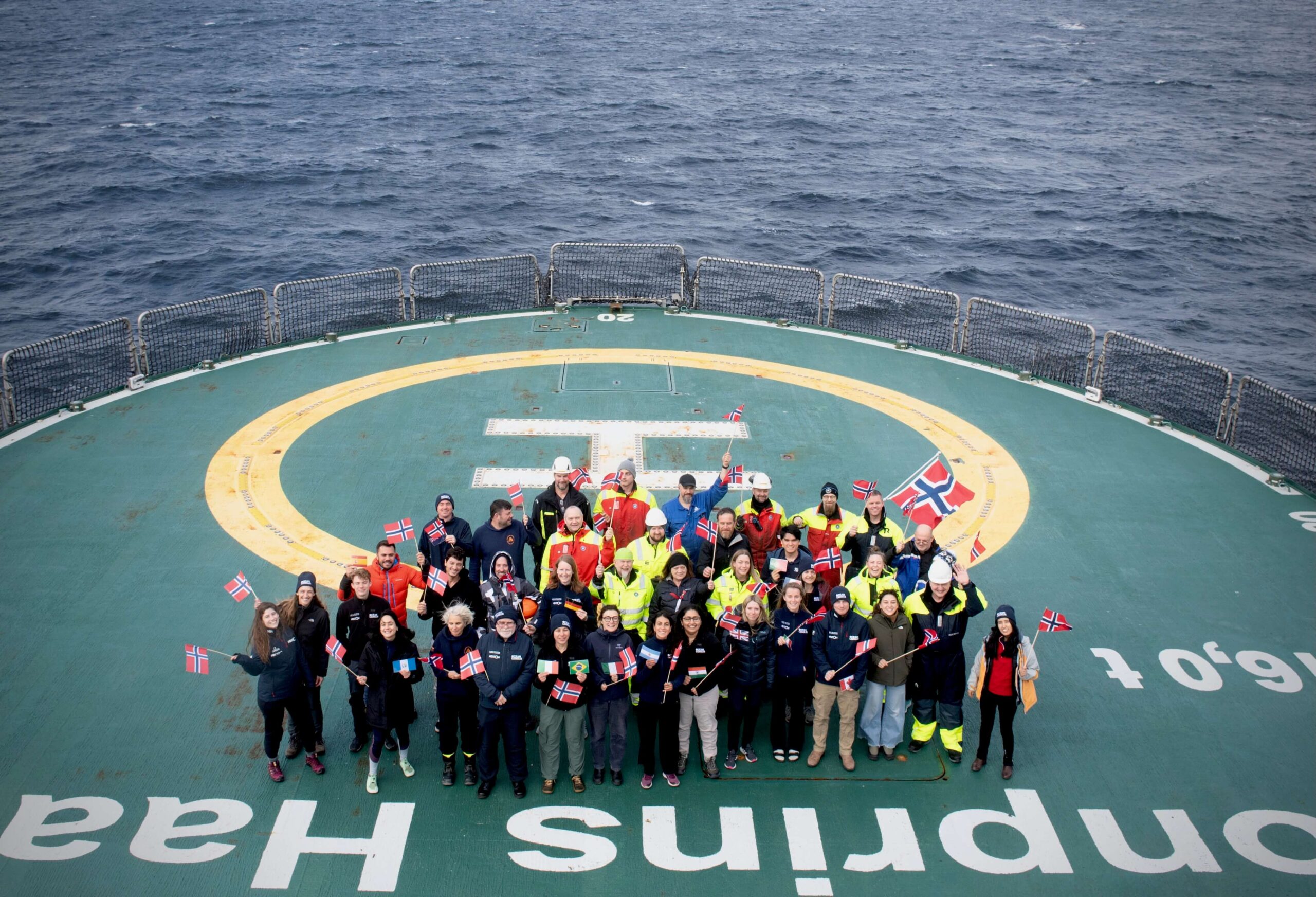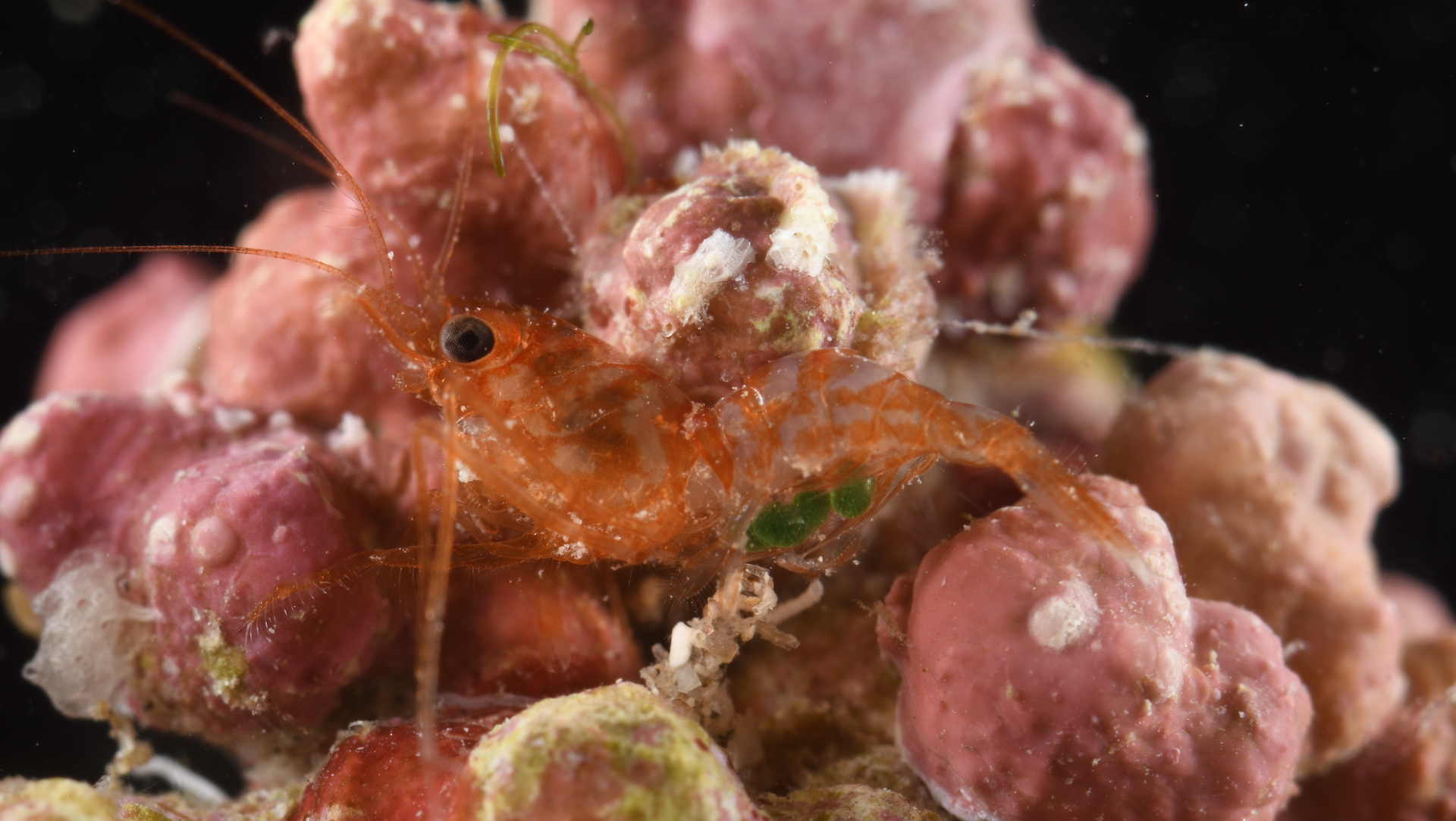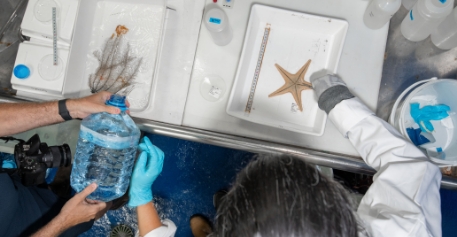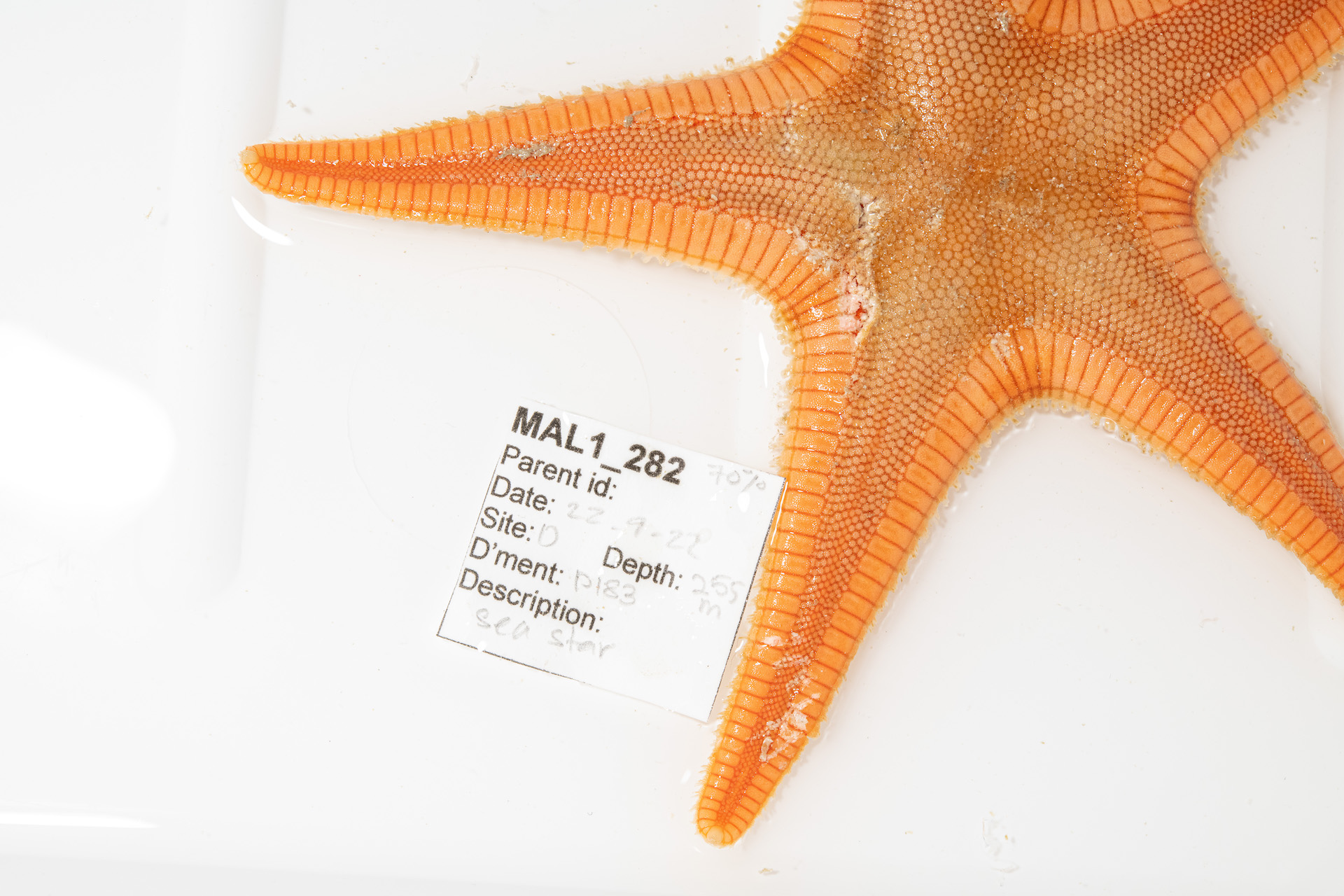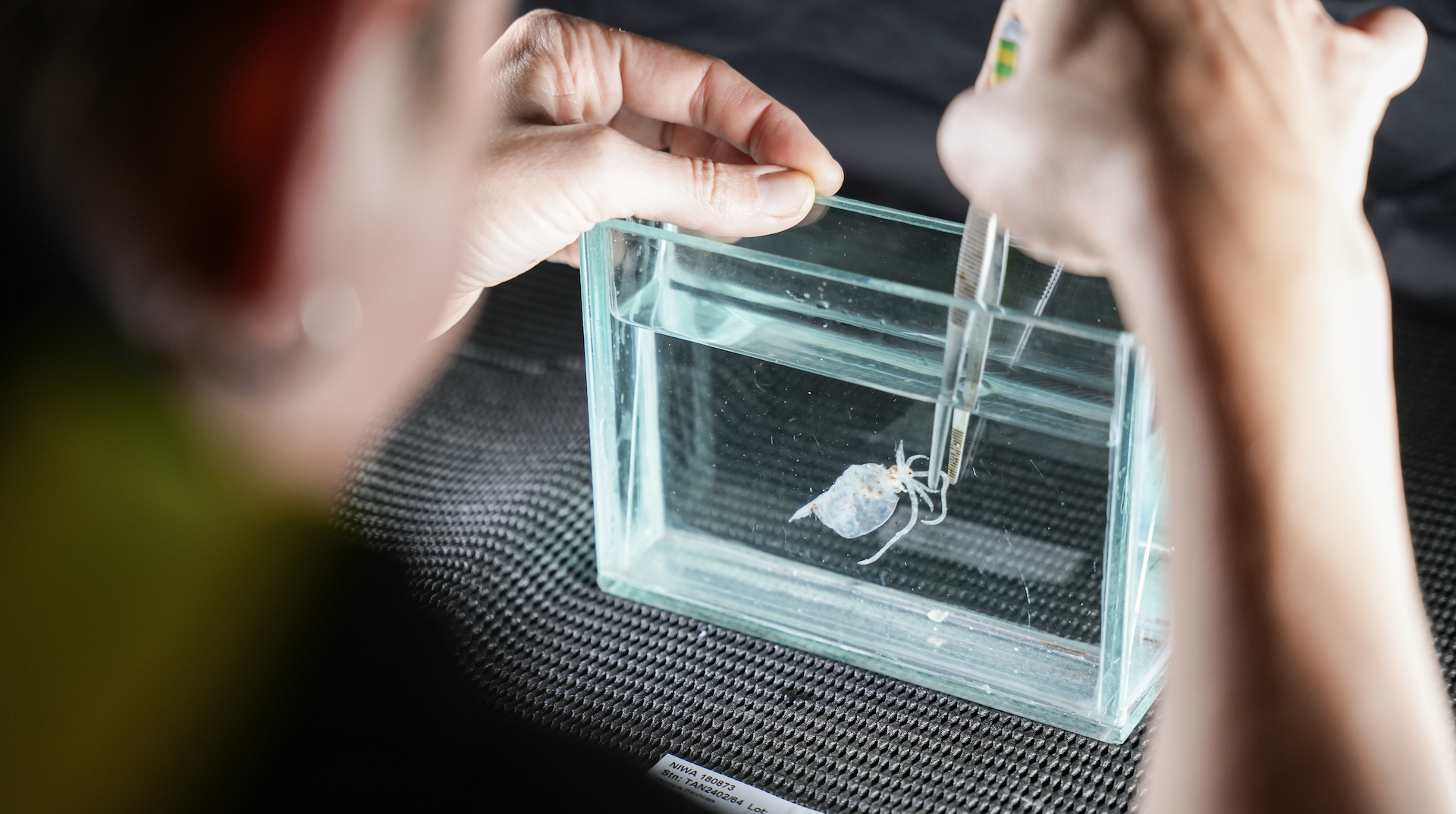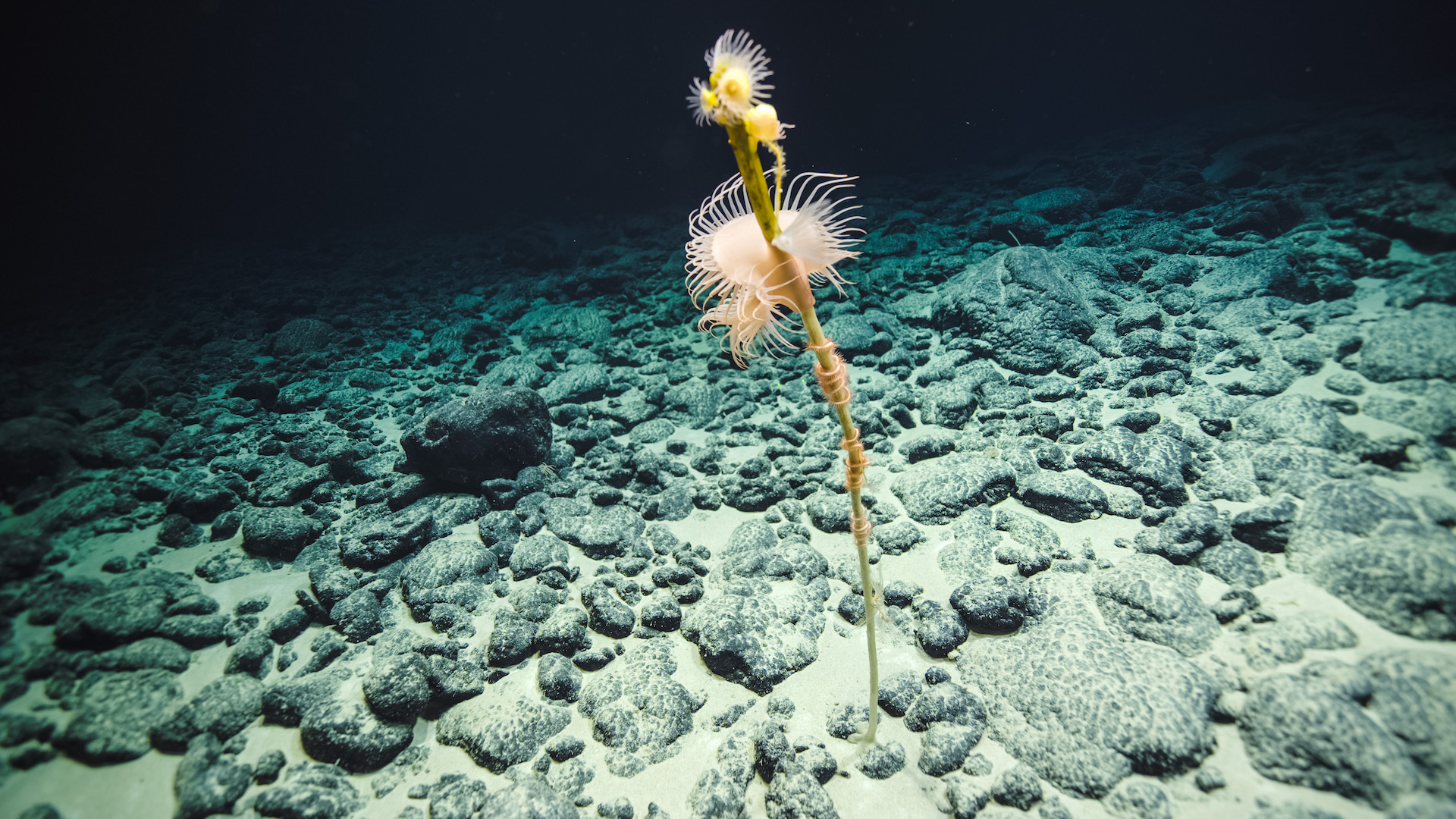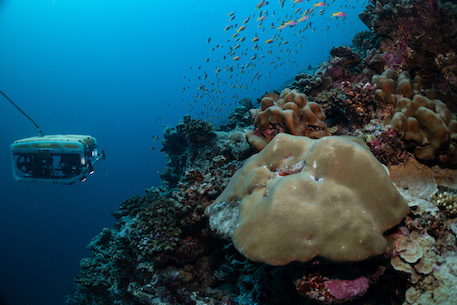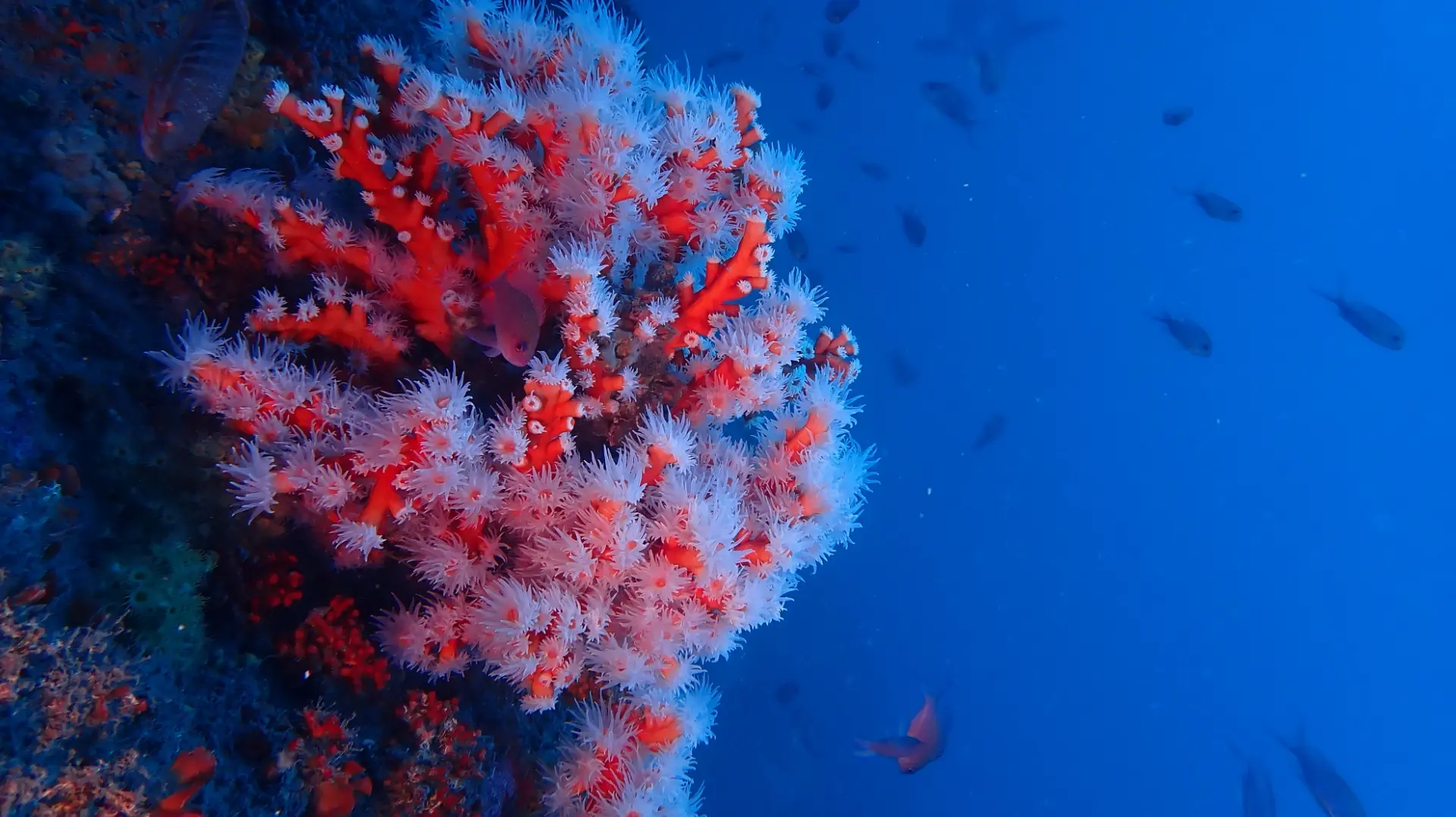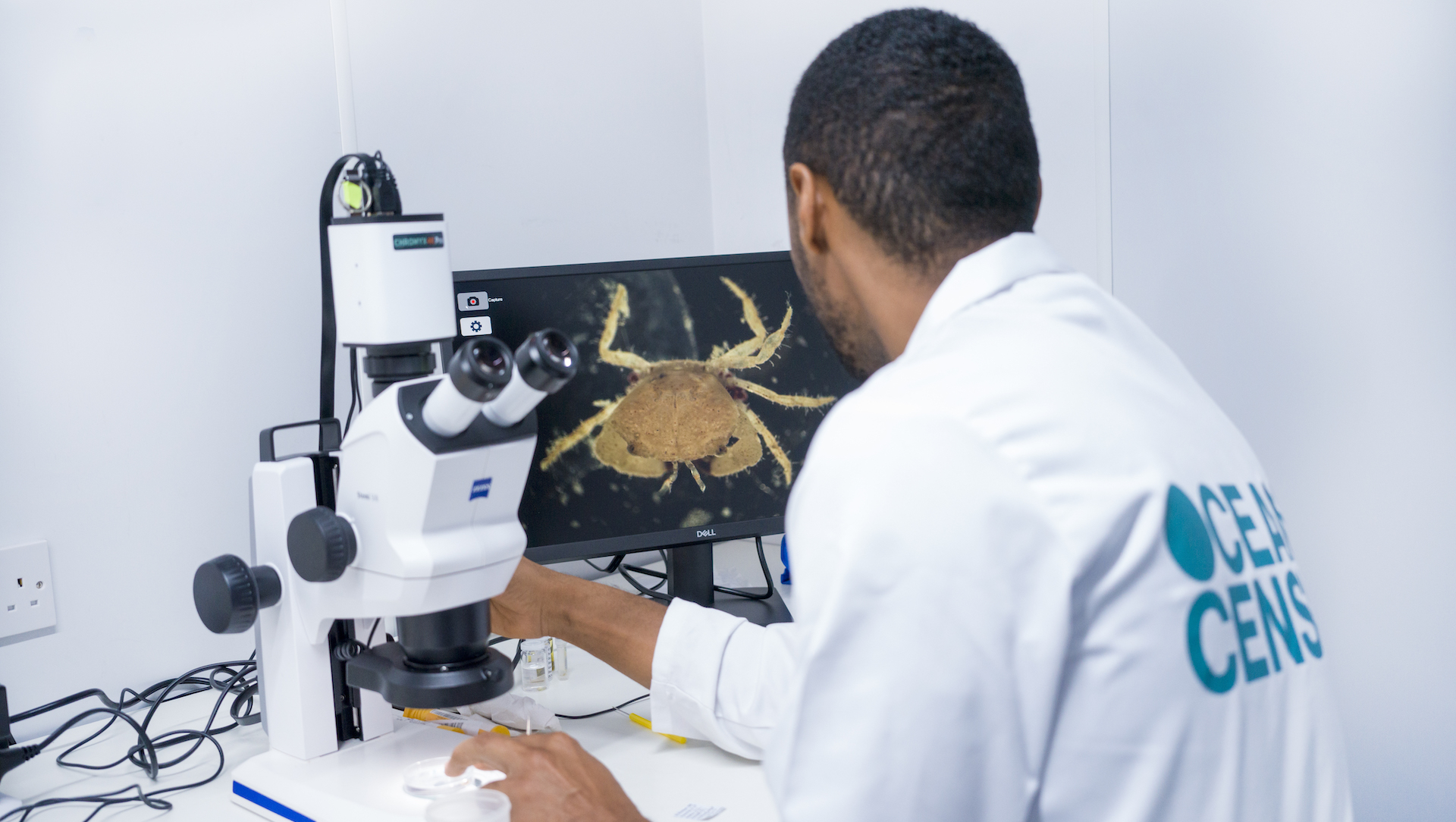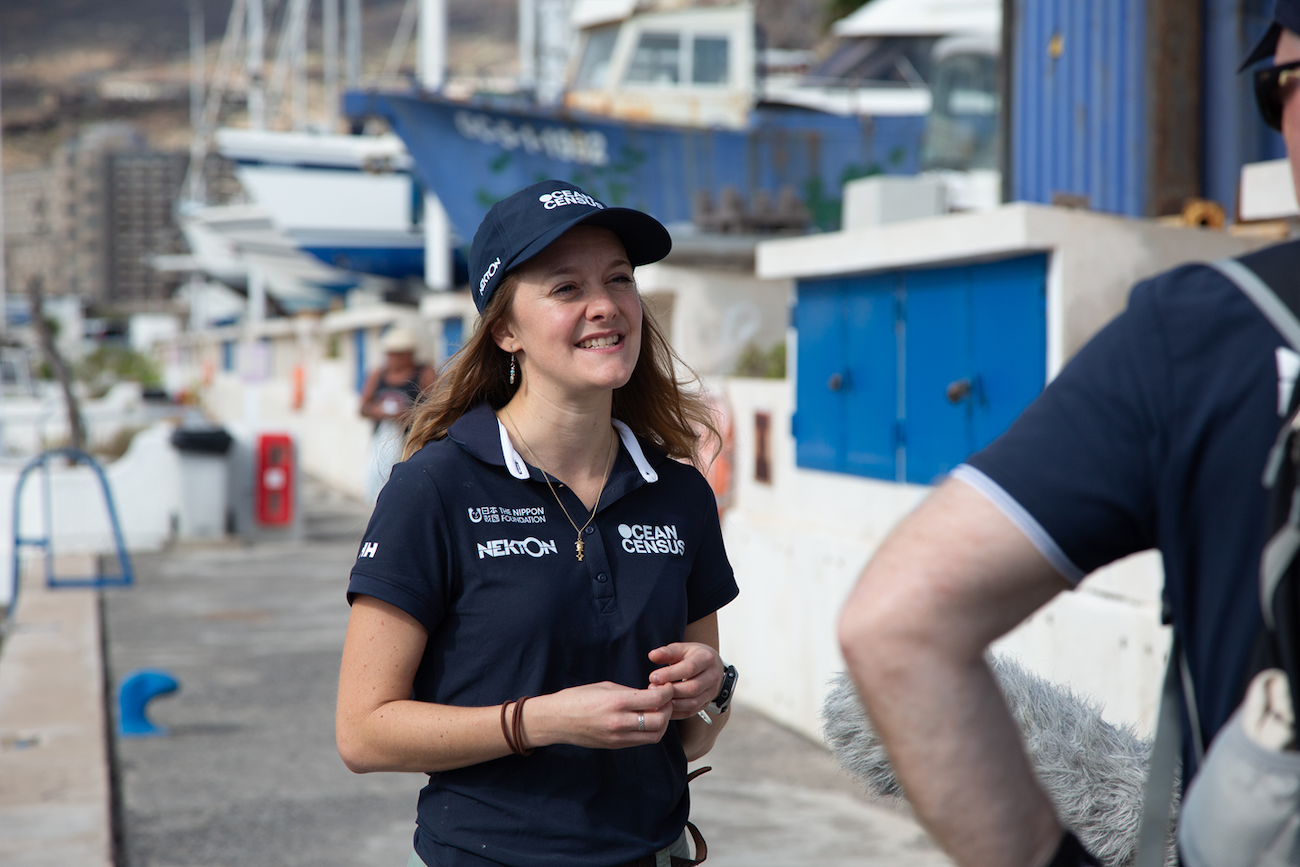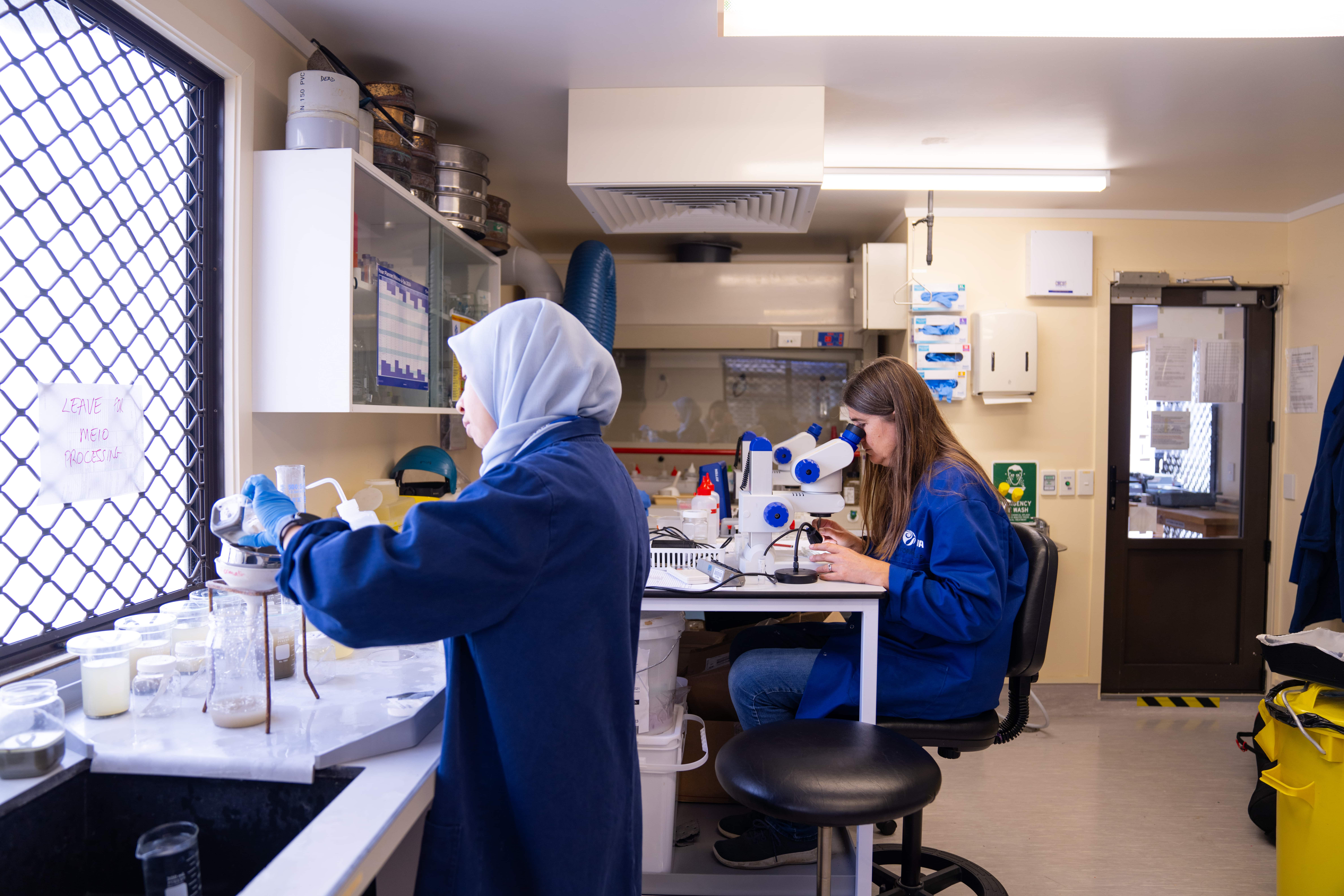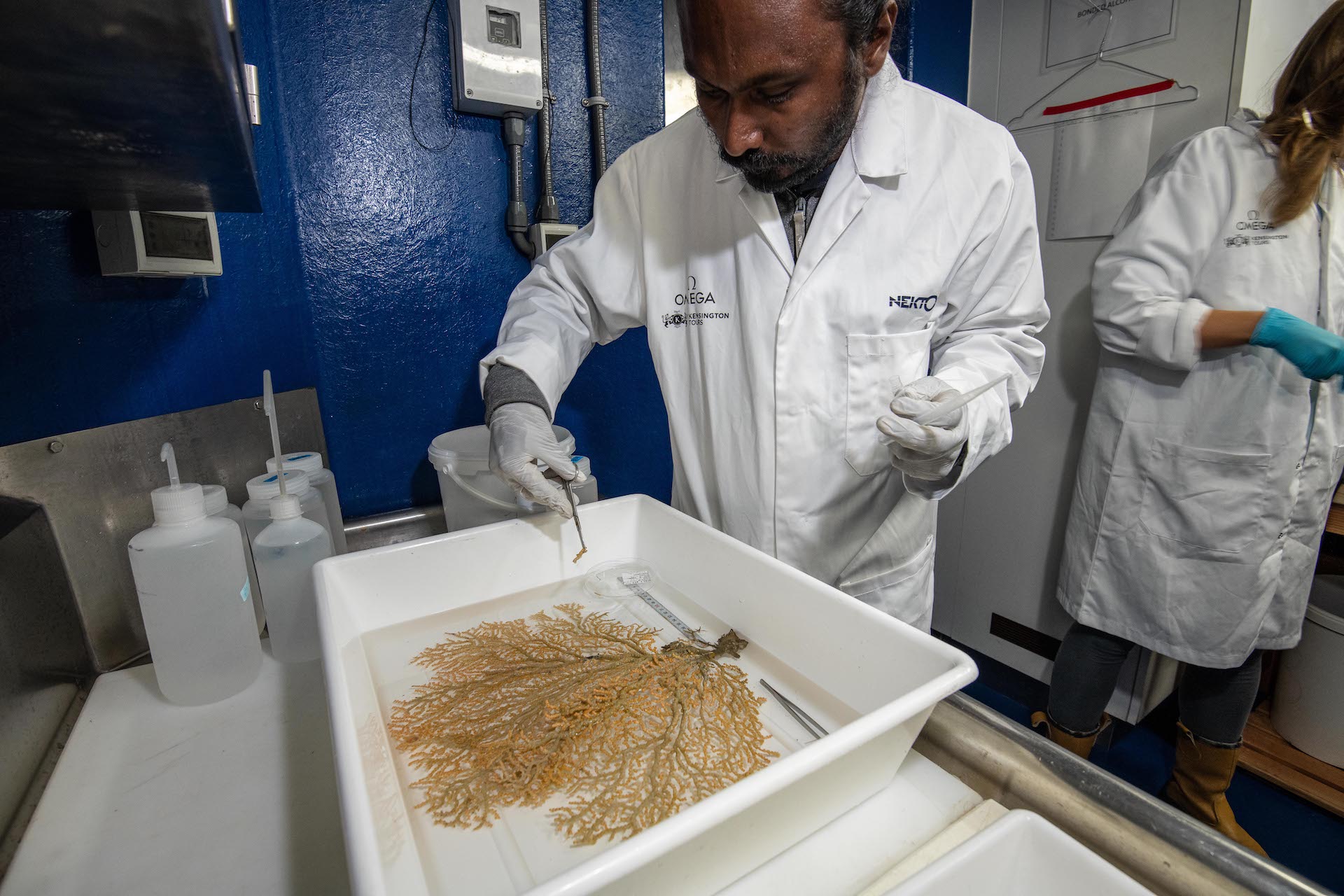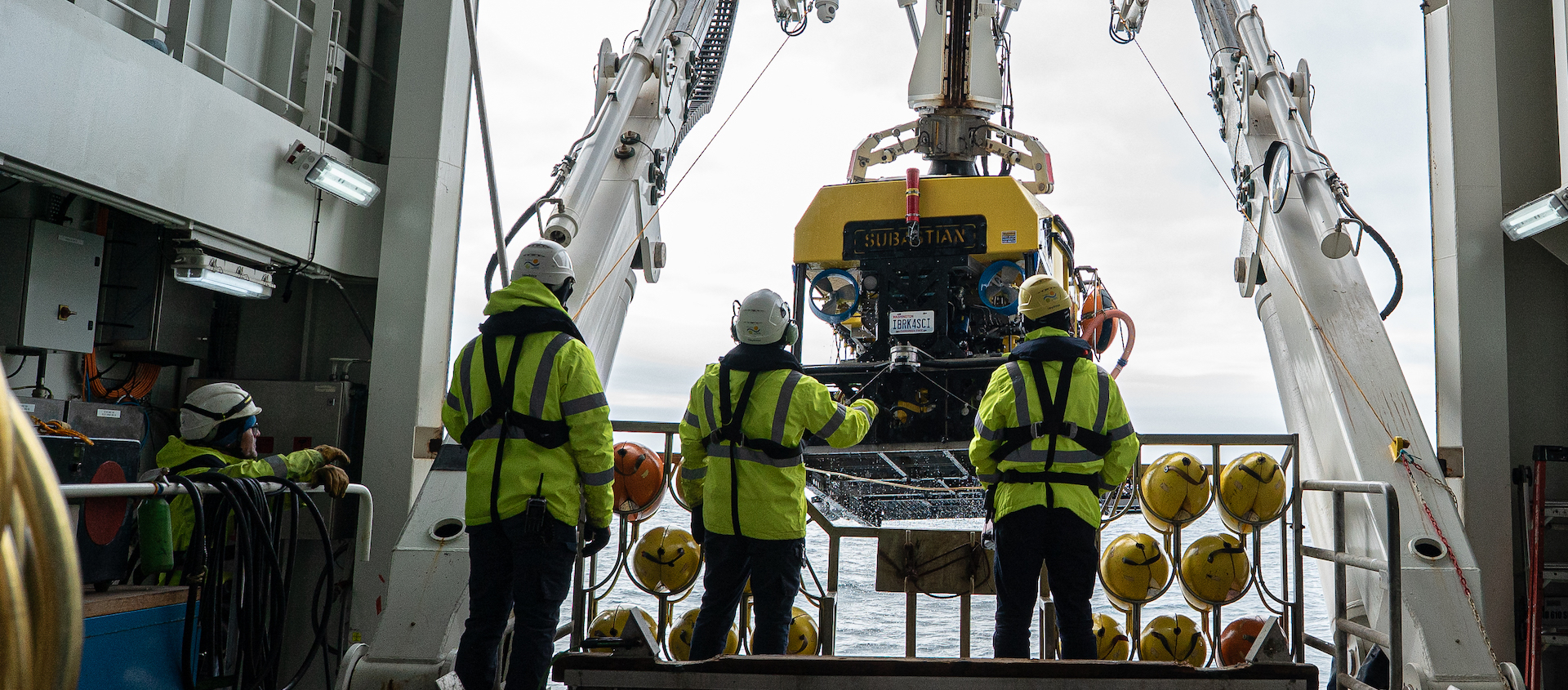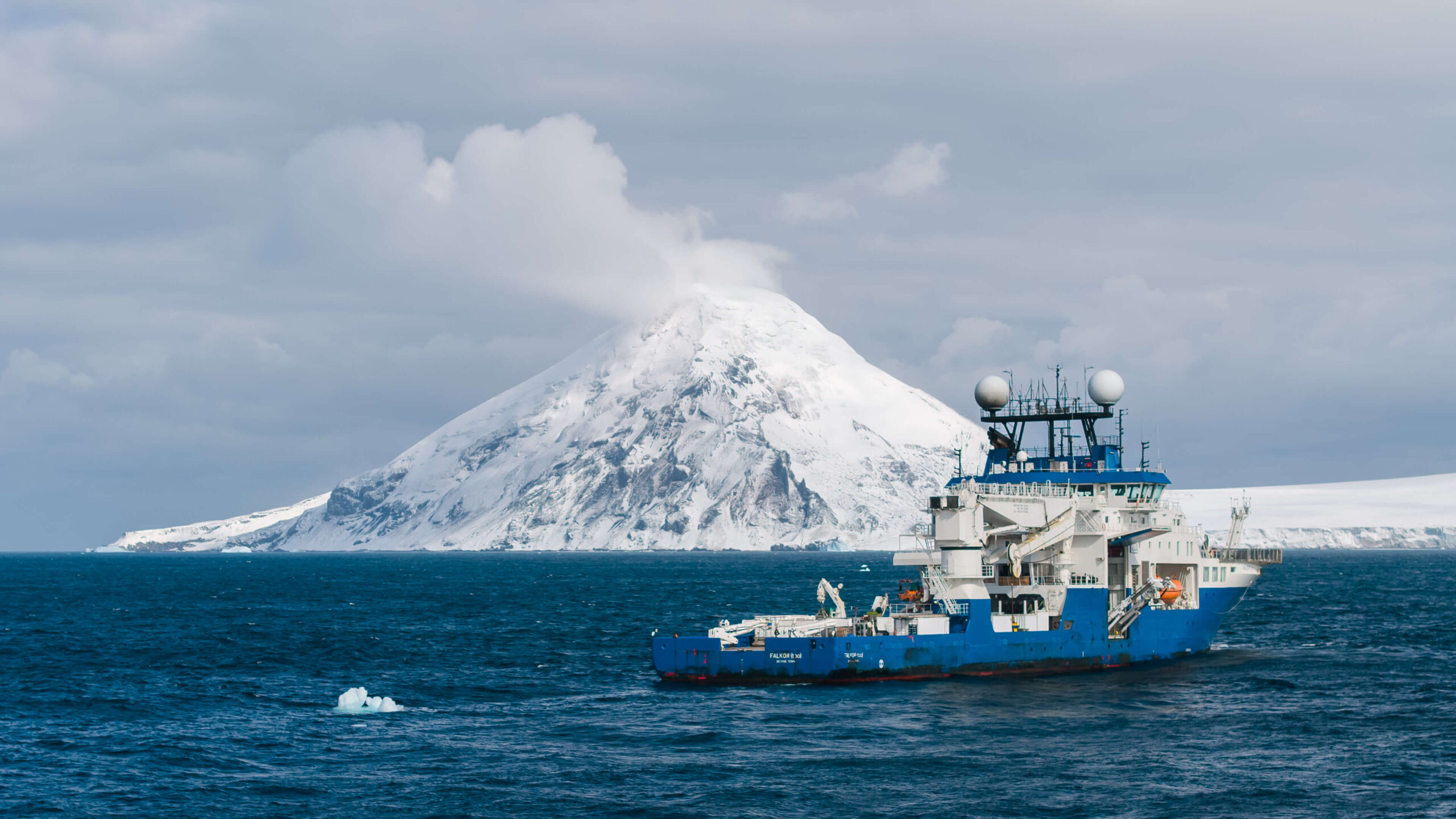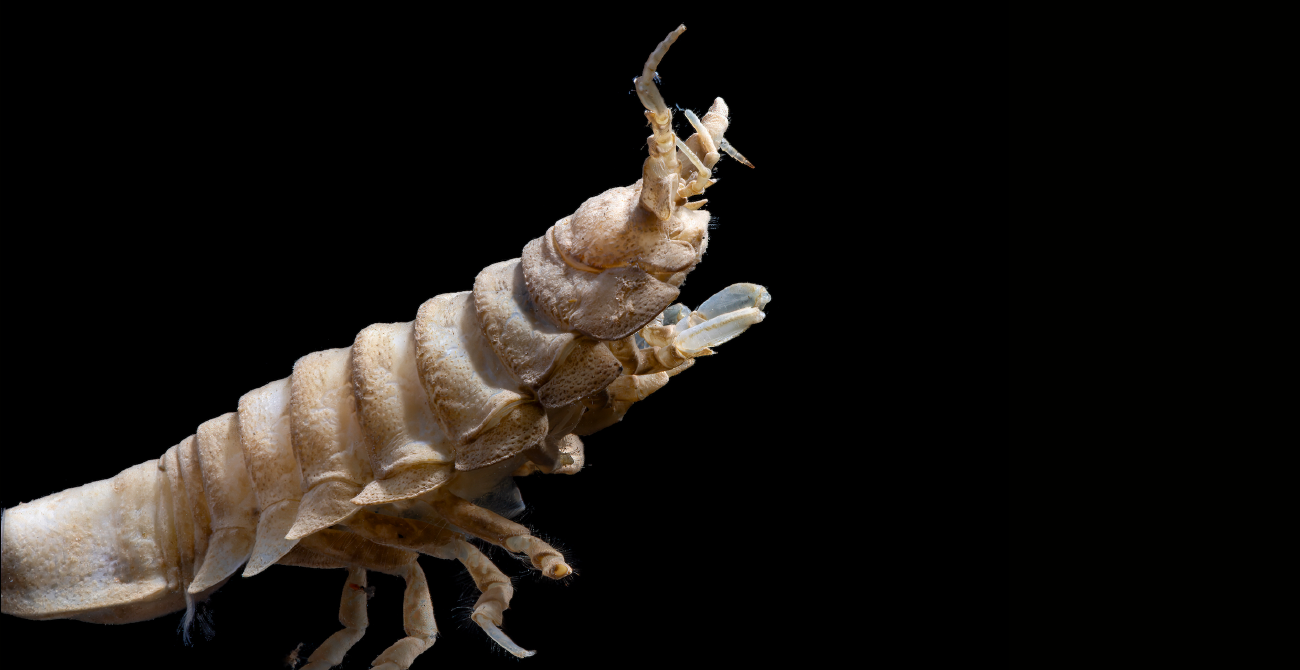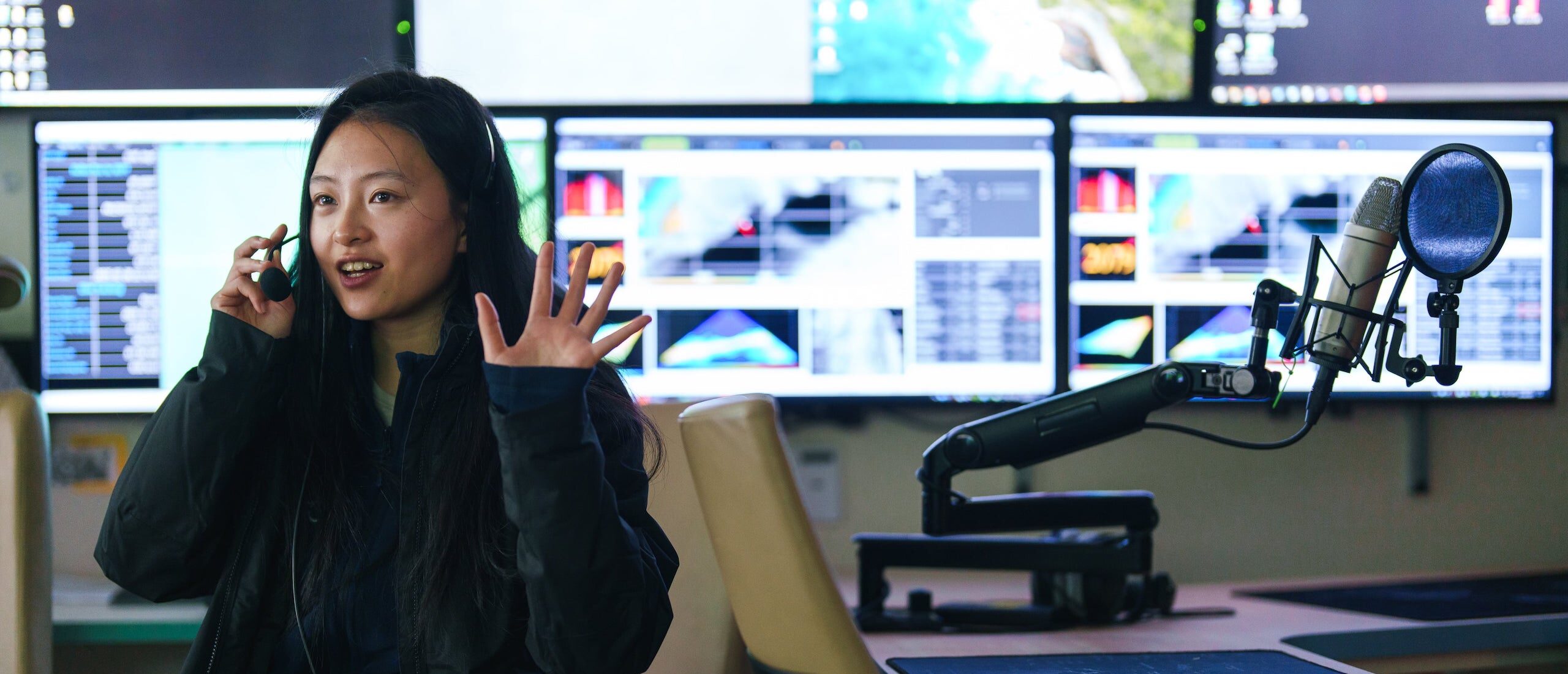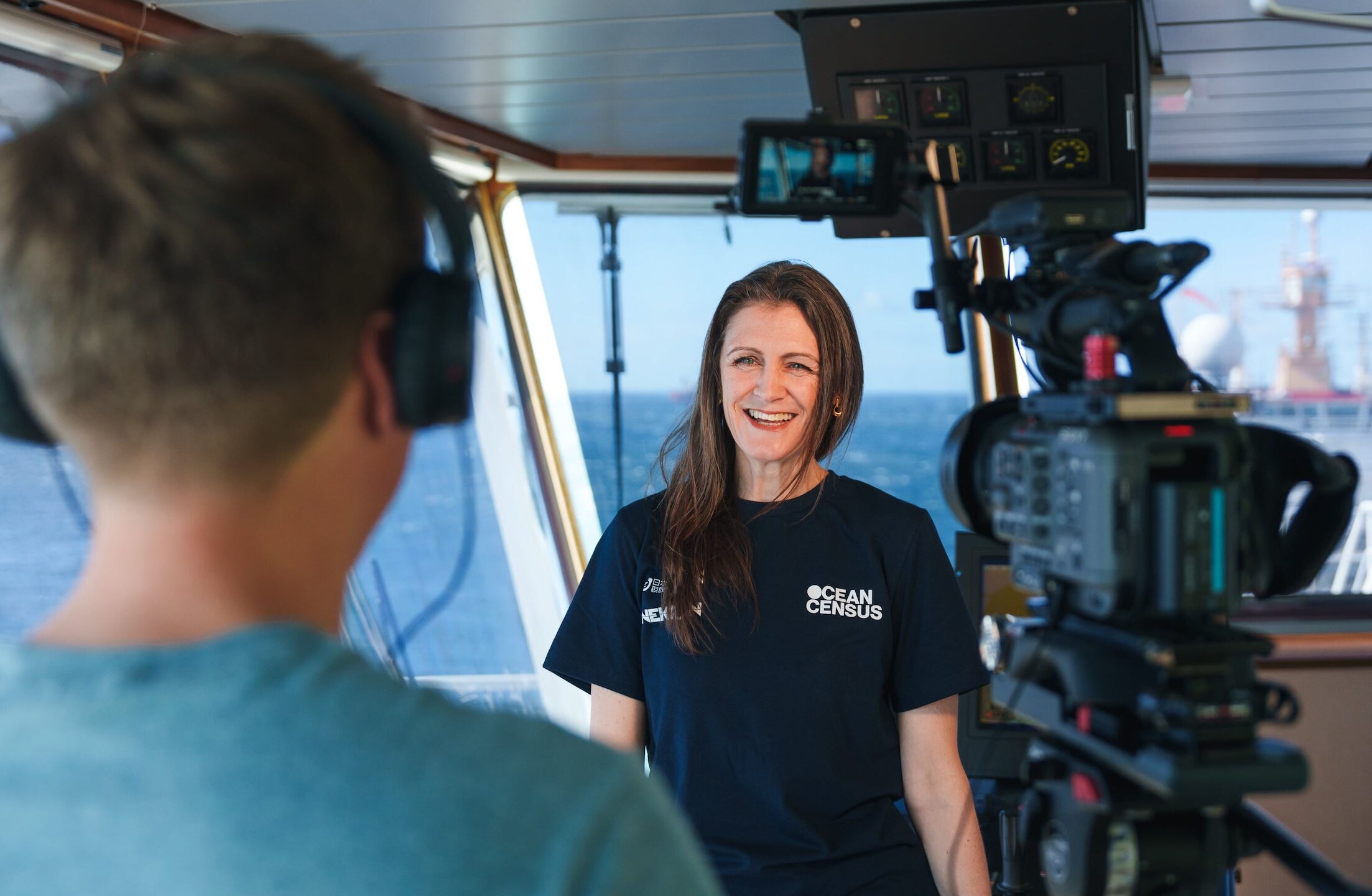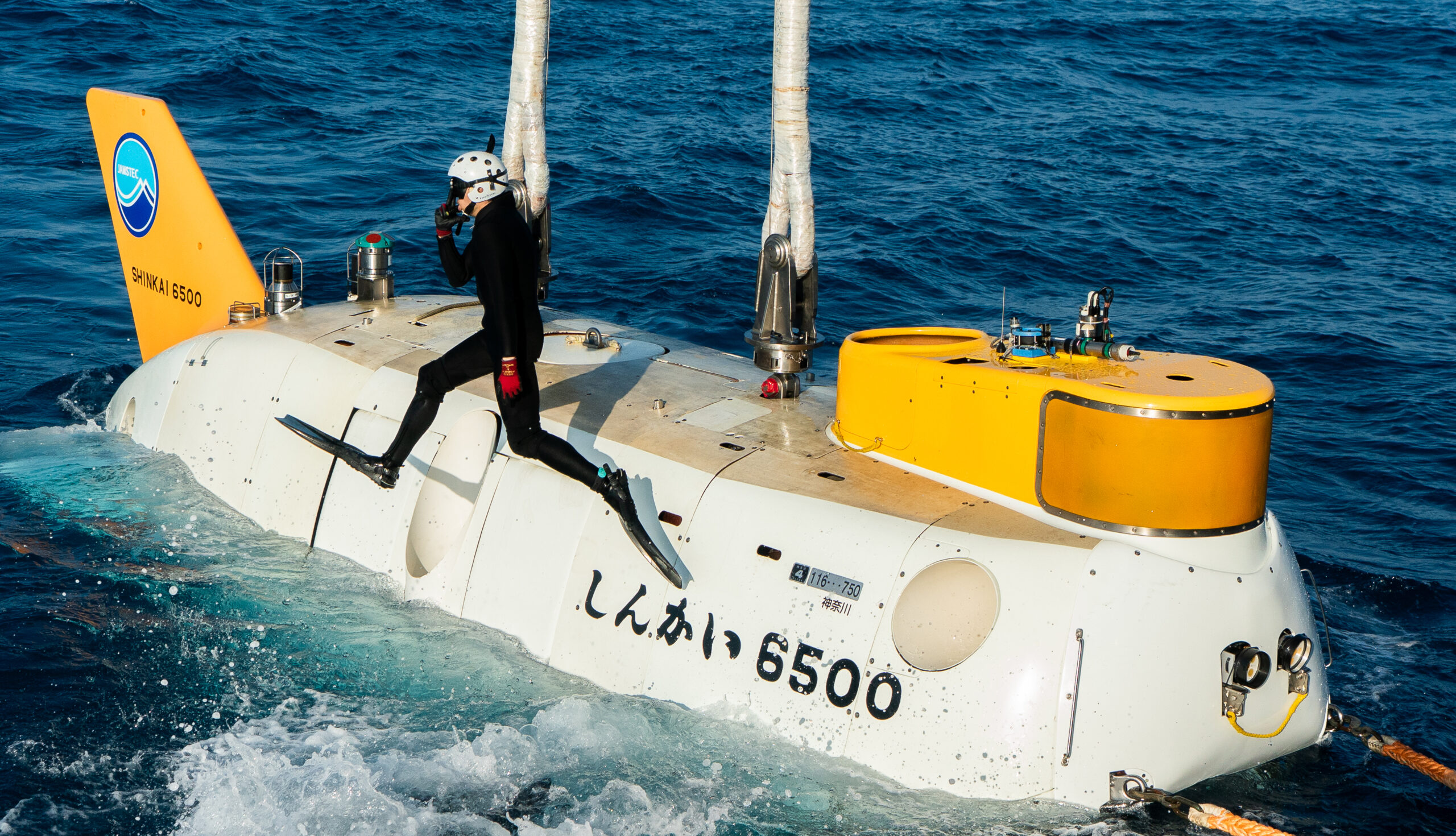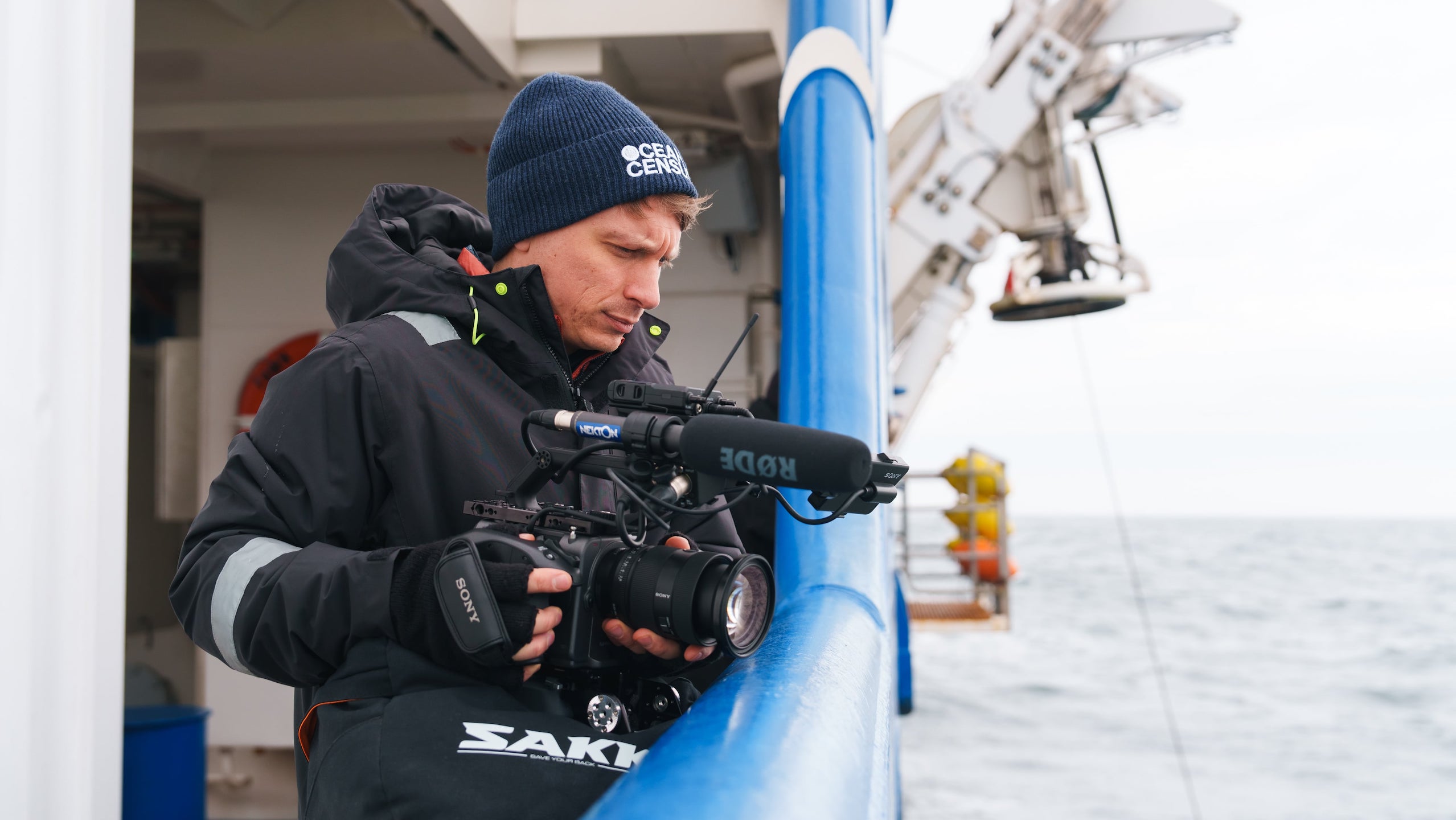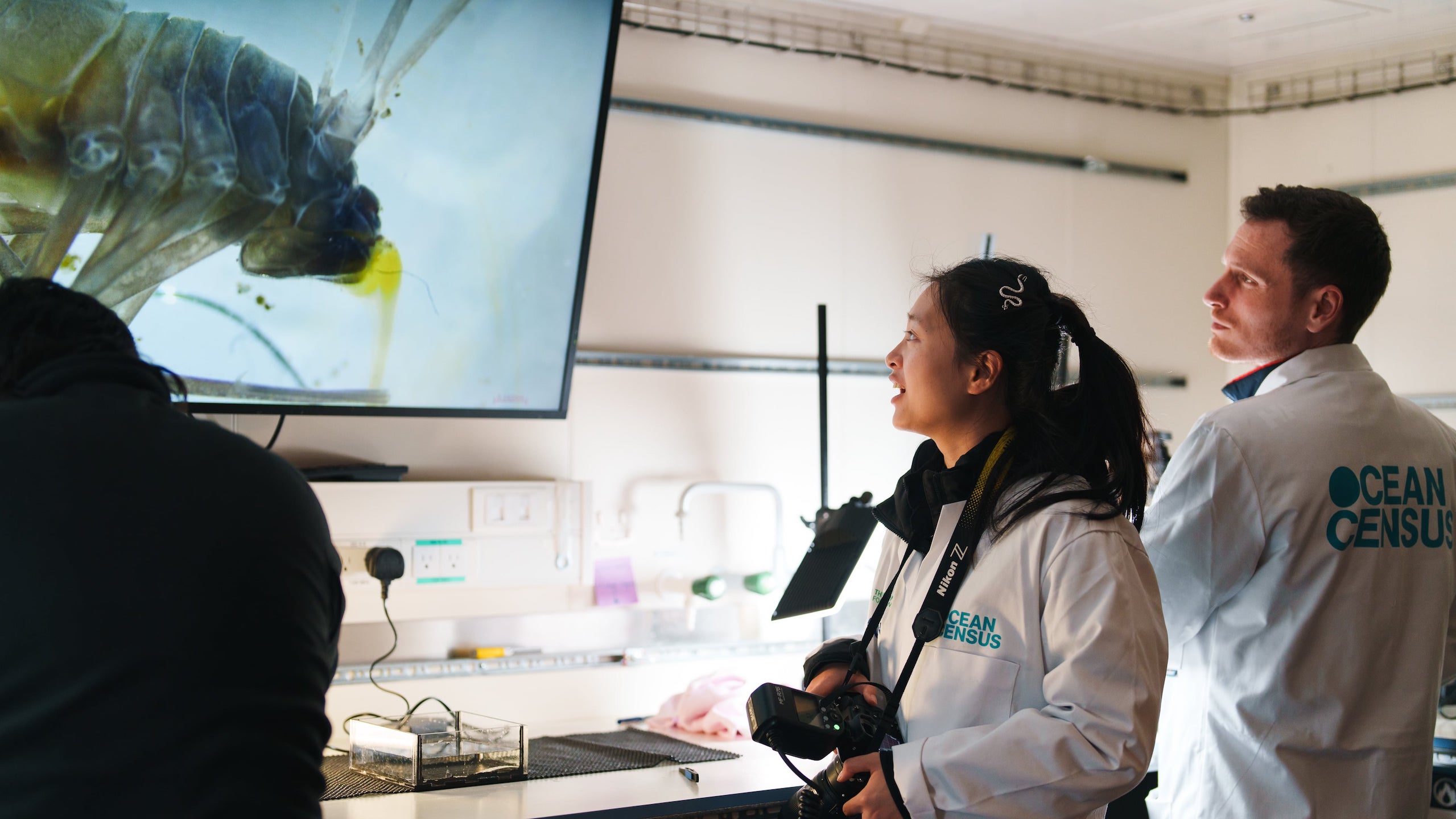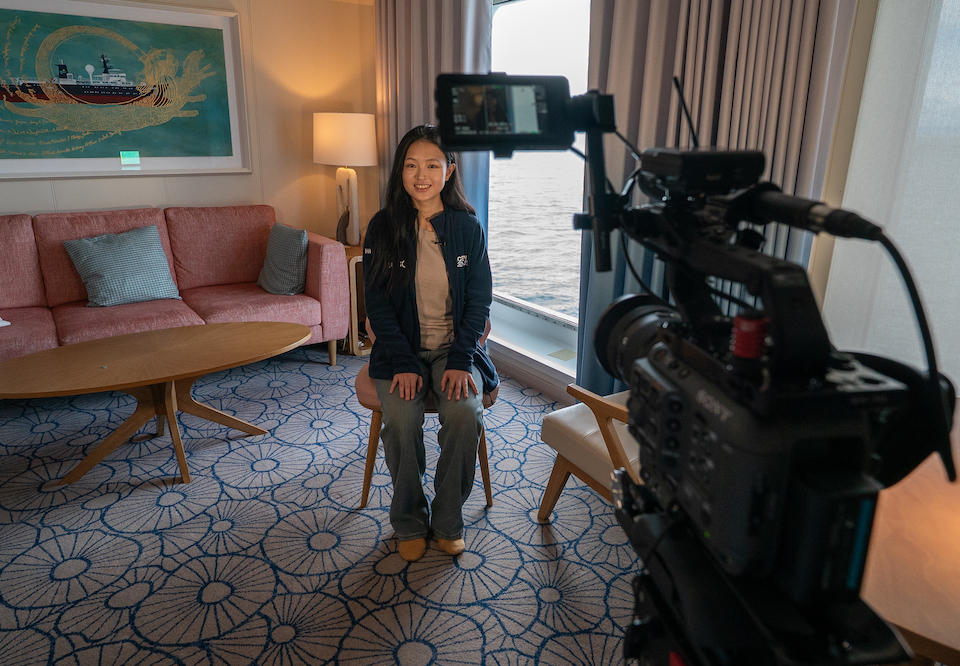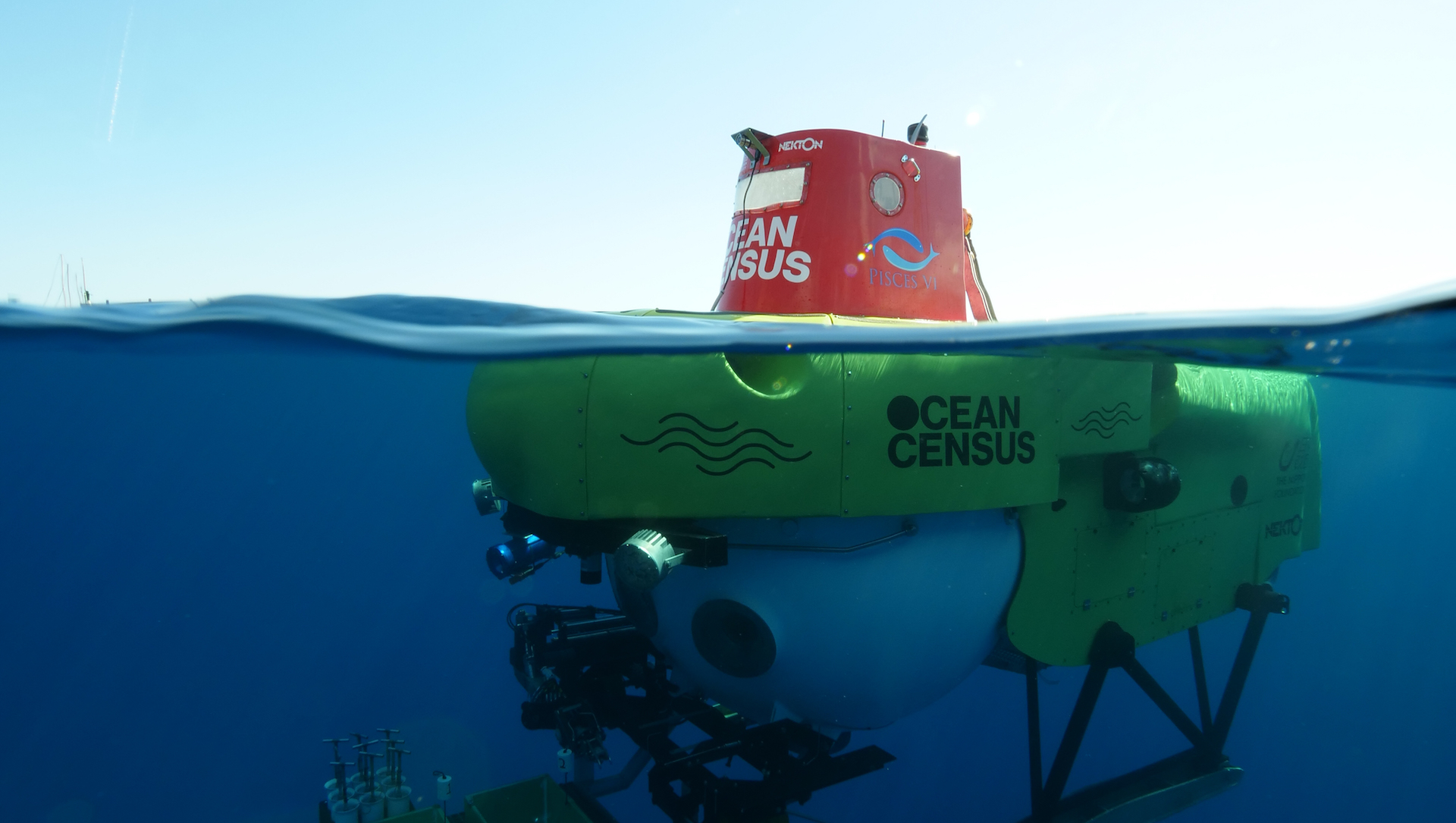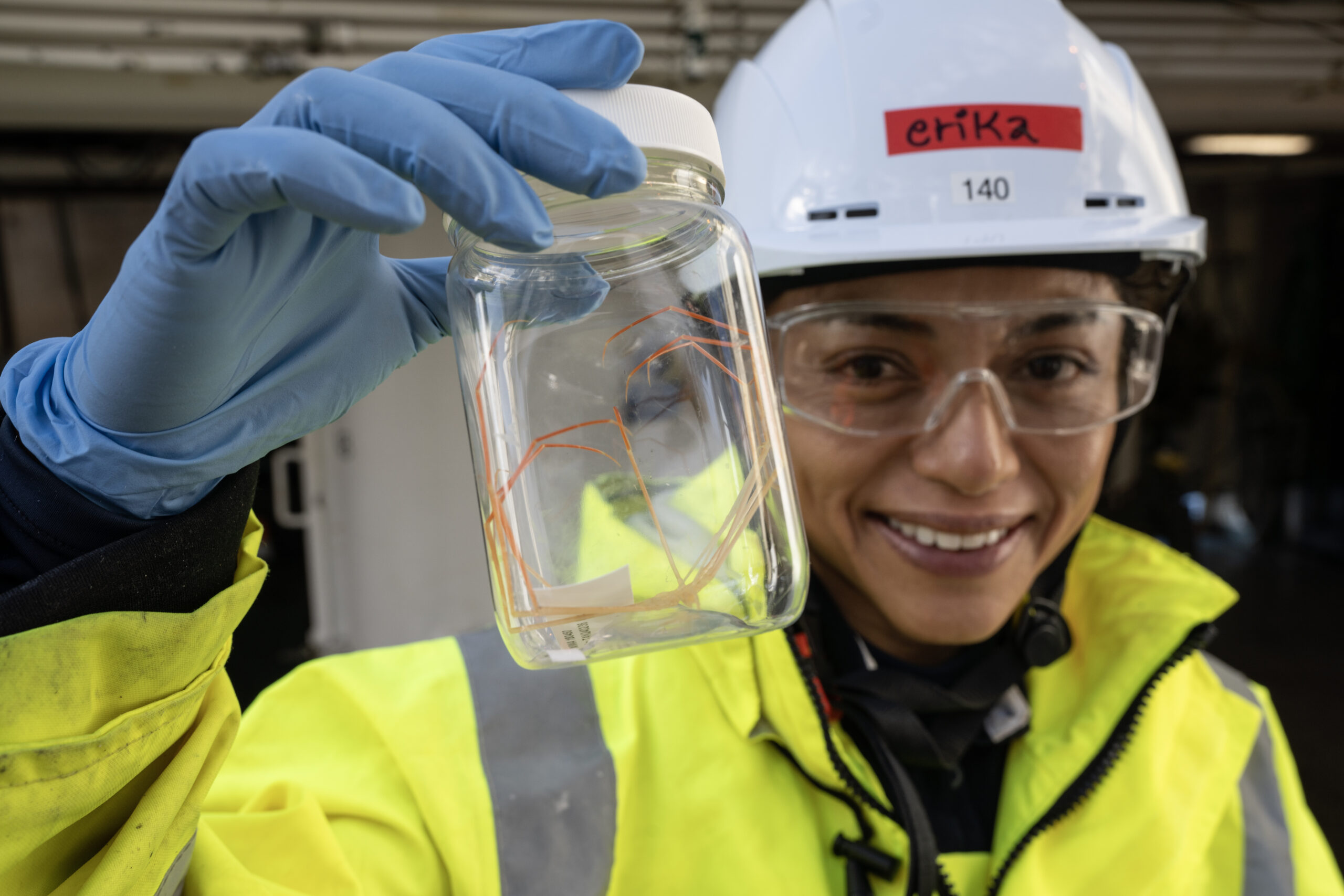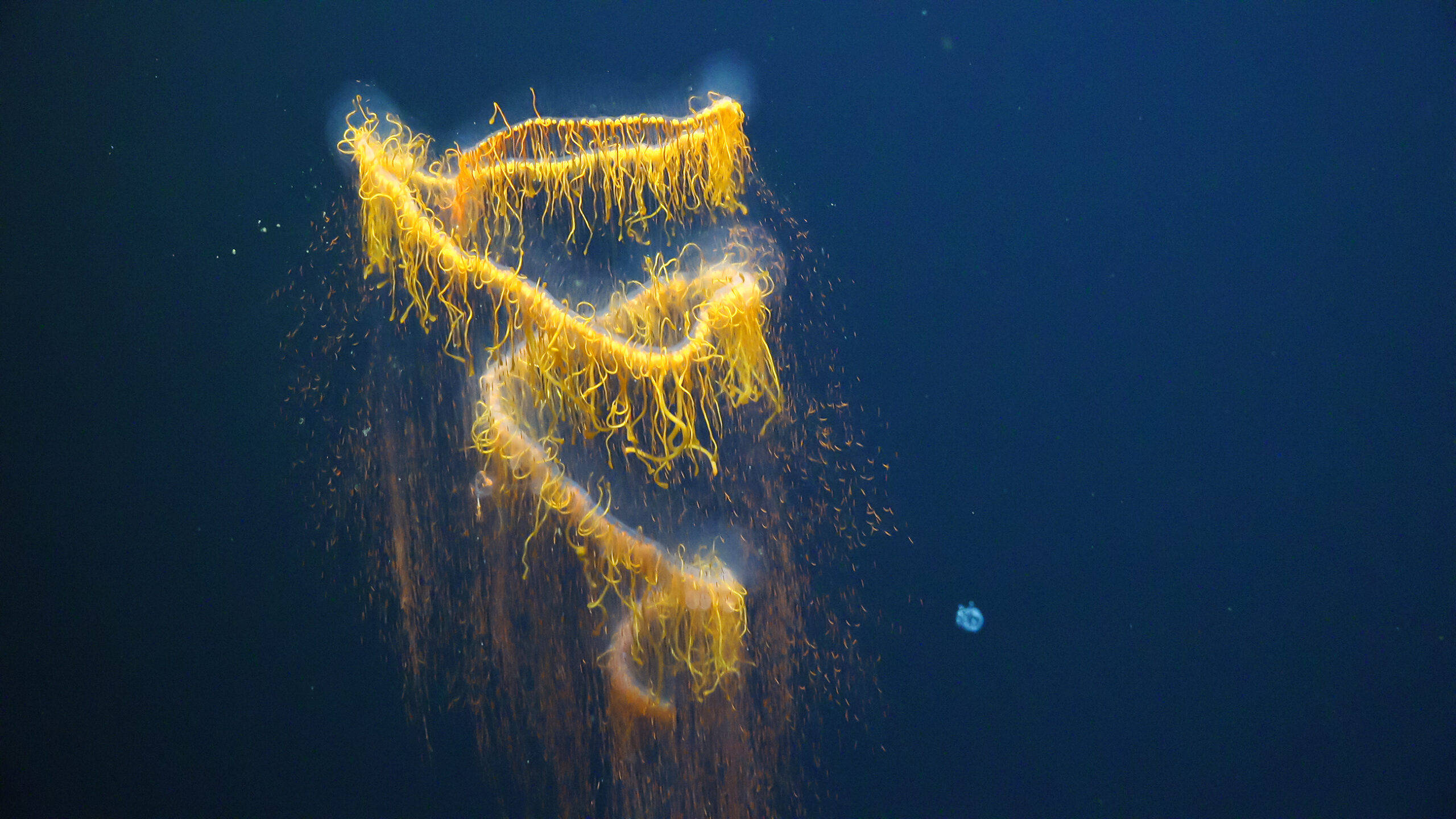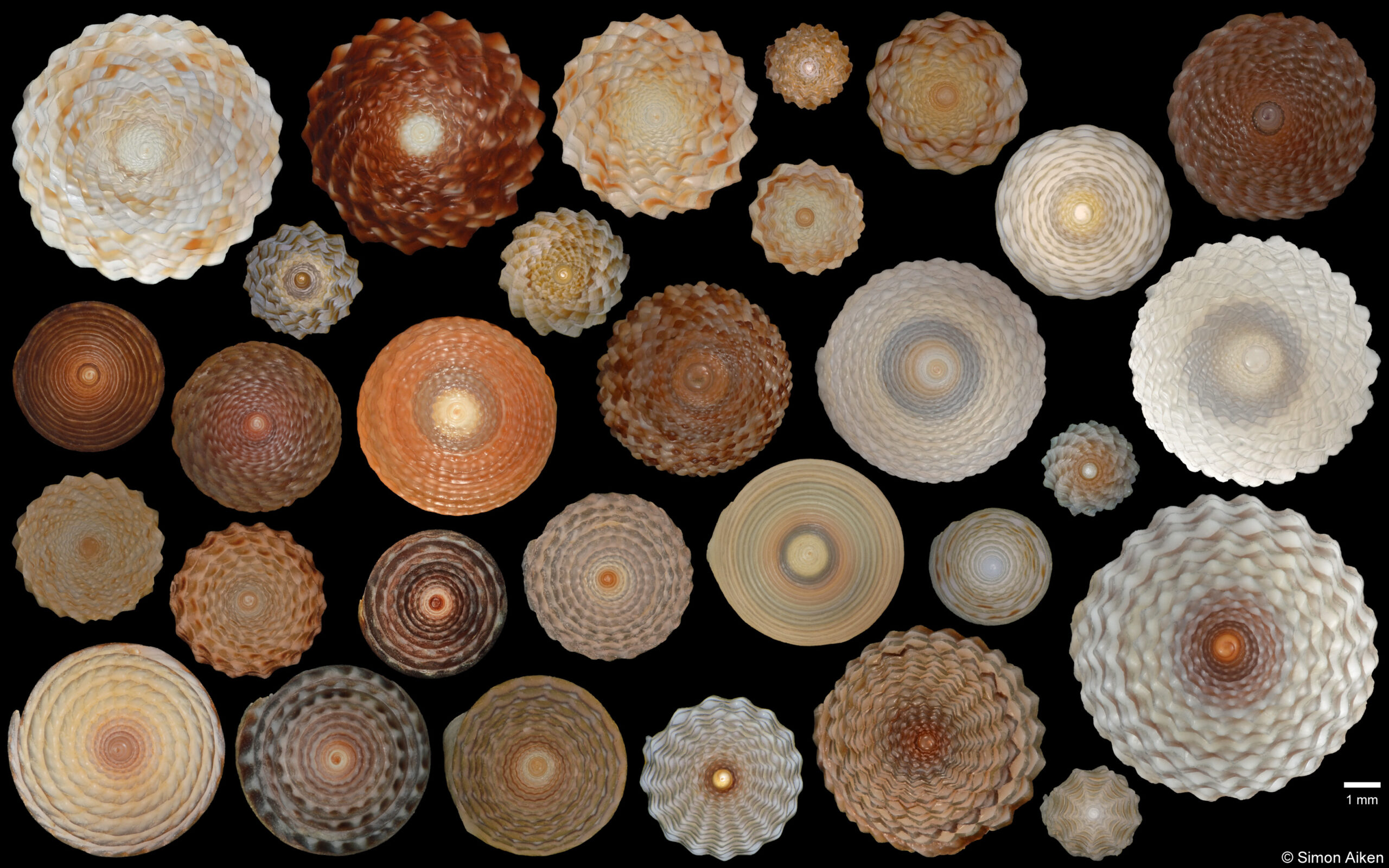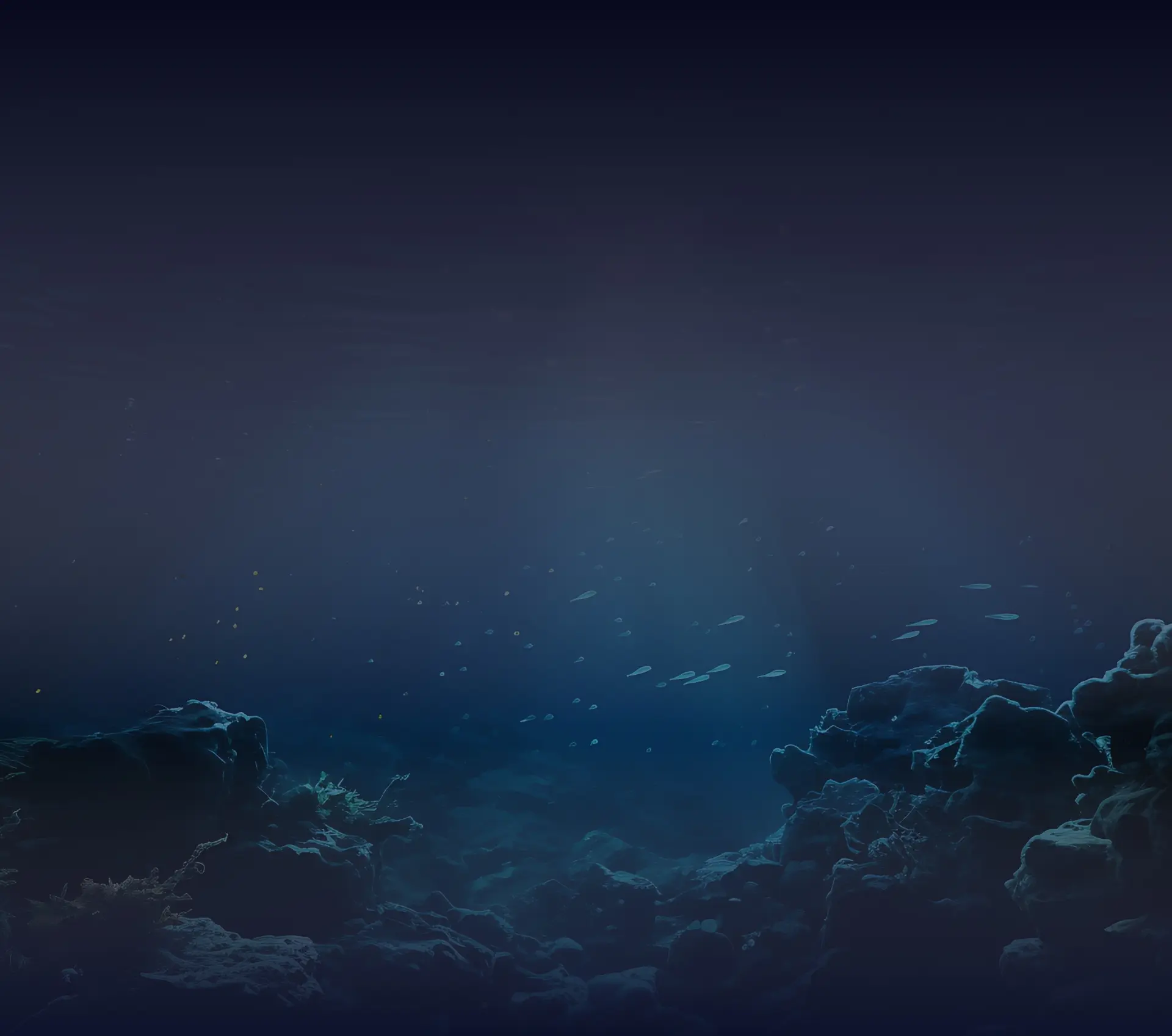
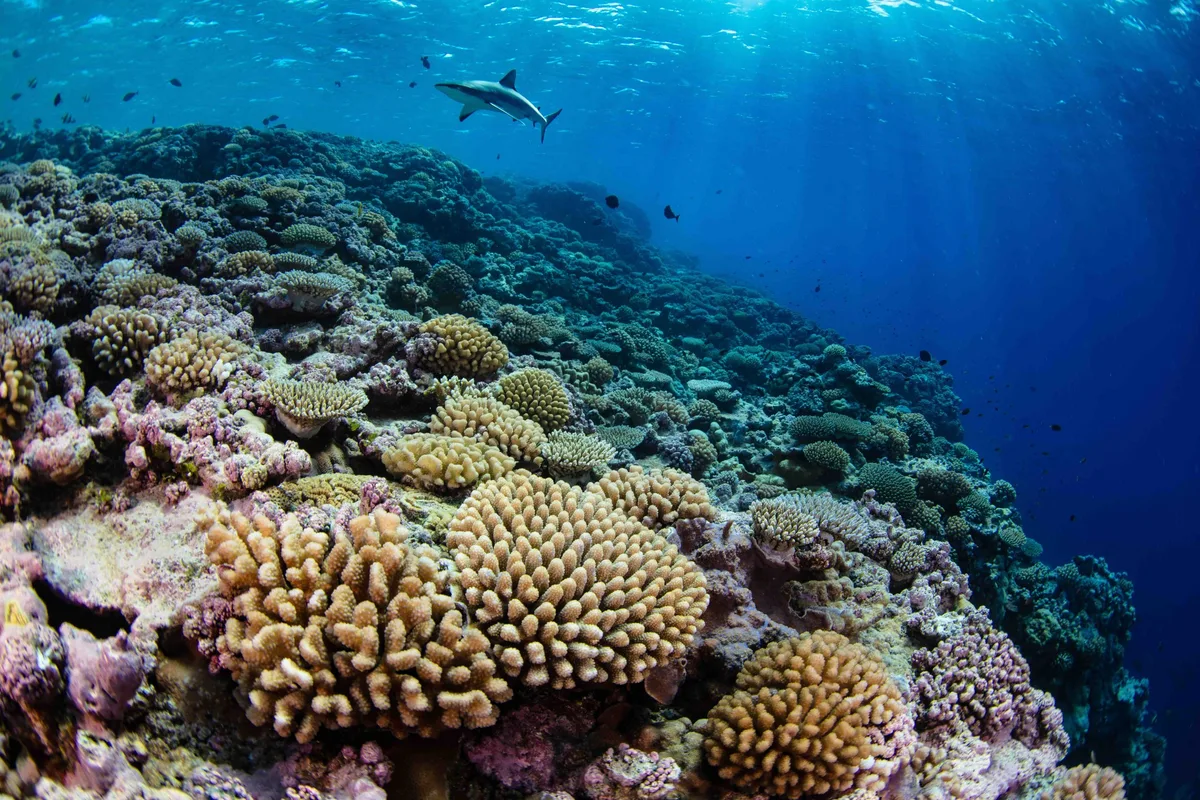
Exploring Deep-Sea Habitats of the
Marshall Islands with Participant Scientist
Luisa F. Dueñas

Deep-Sea Habitats of the Marshall Islands
Luisa F. Dueñas, a member of the Ocean Census Science Network and Associate Professor in the Biology Department at the Universidad Nacional de Colombia, will be on the upcoming Marshall Islands deep-sea expedition aboard Ocean Exploration Trust’s E/V Nautilus.
Luisa’s research focuses on evolutionary processes in the deep sea, particularly on understanding the drivers of diversification and the mechanisms that maintain diversity and population structure over time. Her broader interests include marine ecology, molecular biology, systematics, conservation, phylogeography, and phylogenomics.
This 21-day telepresence-enabled expedition will explore the largely unmapped and unsurveyed deep-sea regions of the Republic of the Marshall Islands—an atoll-based nation comprising over 1,200 islands and surrounded by 2.13 million square kilometers of ocean.
This effort is funded by NOAA Ocean Exploration through the Ocean Exploration Cooperative Institute.
Feature Image Credit: National Geographic Pristine Seas
Deep Sea Evolution & Diversification
Why is preserving population structure in the deep sea important, and what could happen if that balance is disrupted?
Preserving population structure in the deep sea is essential because it maintains genetic diversity, which allows species to adapt to environmental changes and guarantees ecosystem resilience. Most deep-sea species have slow growth rates and limited dispersal, making them very vulnerable to disturbances, such as habitat destruction, resource extraction, or climate change. If population structure is disrupted, it can lead to reduced connectivity and local extinctions, threatening the stability and diversity of deep-sea ecosystems.
Have you observed any unique examples of species adaptation or speciation during your work on deep-sea biodiversity?
My main line of research is related to deep-sea corals, although I’ve switched organisms depending on the opportunities for biological sampling and the availability of samples in biological collections.
Regarding octocorals, I find it fascinating that the polyps of the bottle-brush octocoral Tokoprymno maia change their morphology when they are incubating larvae, so it’s obvious when a colony is “pregnant”. As a brooding colony, the larvae, when fully developed, leave the adult colony and settle near it. This means that the distribution of this coral’s populations is restricted, with little genetic flow with other populations. These conditions can lead to speciation events. Having worked on the phylogeography of Tokoprymno maia and complementing the study with morphological traits, we have discovered new species that are in the process of being described.
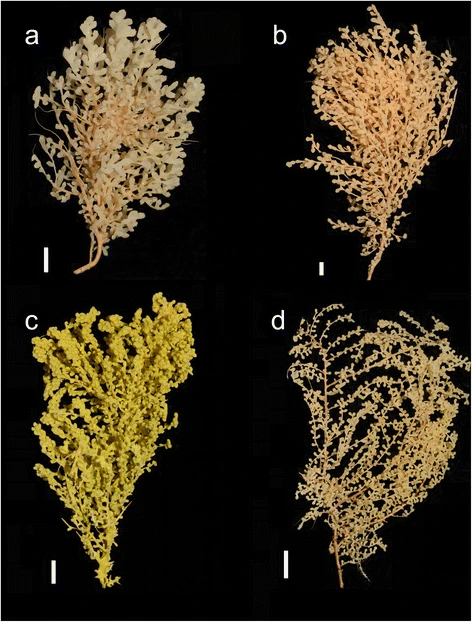
Photographs of the bottlebrush deep-sea octocoral colonies from the South Pacific and Southern Ocean. Each letter represents an example of the colonies from each population: a- New Zealand, b- Tasmania, c- Macquarie Ridge, d- Antarctica. The bar next to each colony corresponds to a 1 cm scale. Image Credits: Luisa F. Dueñas et al.
Biodiversity & Population Dynamics
What inspired your focus on evolutionary processes in the deep sea?
Applications, Impacts & Conservation
How might the findings from this expedition to the Marshall Islands contribute to our global understanding of deep-sea diversity?
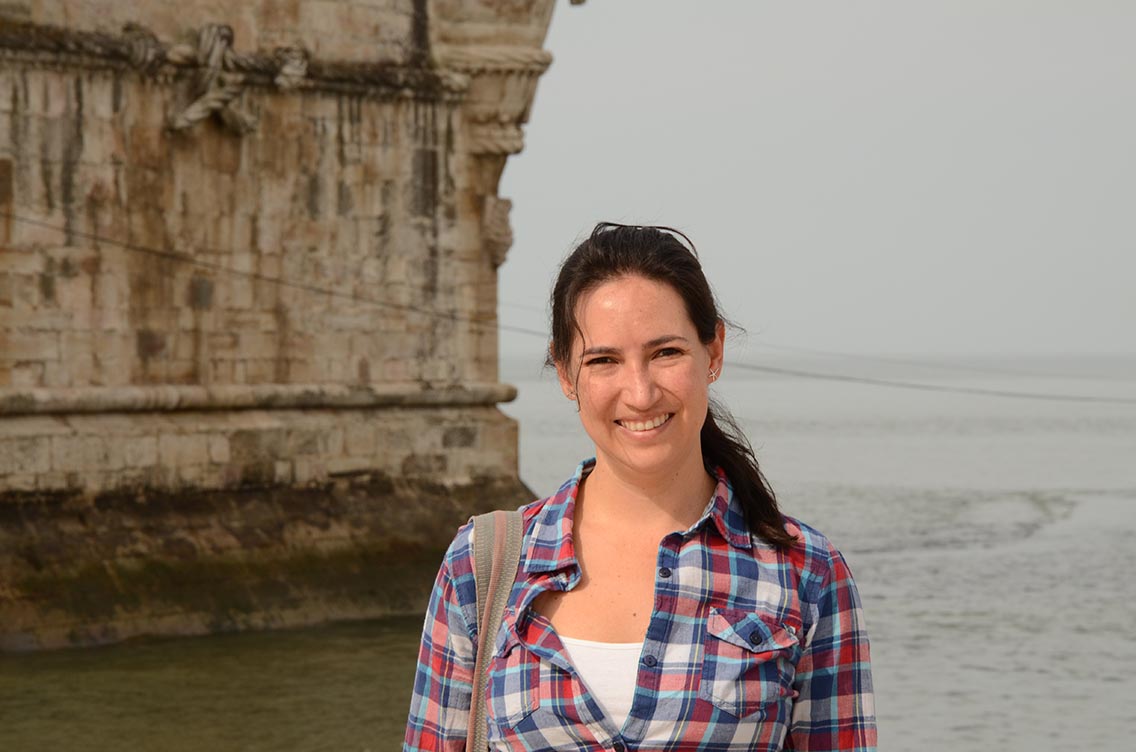
Image Credit: Luisa F. Dueñas
Want to learn More?
Using advanced mapping, remotely operated vehicle (ROV), and telepresence systems, the expedition aims to collect vital baseline information to support the Marshall Islands’ Marine Spatial Planning process. It also contributes to broader U.S.–Marshall Islands collaborations focused on sustainable fisheries, marine conservation, and regional security.
We’re excited for the discoveries this expedition will bring and proud to support scientific expertise from the global south in the quest to illuminate Earth’s final frontier: the deep ocean.
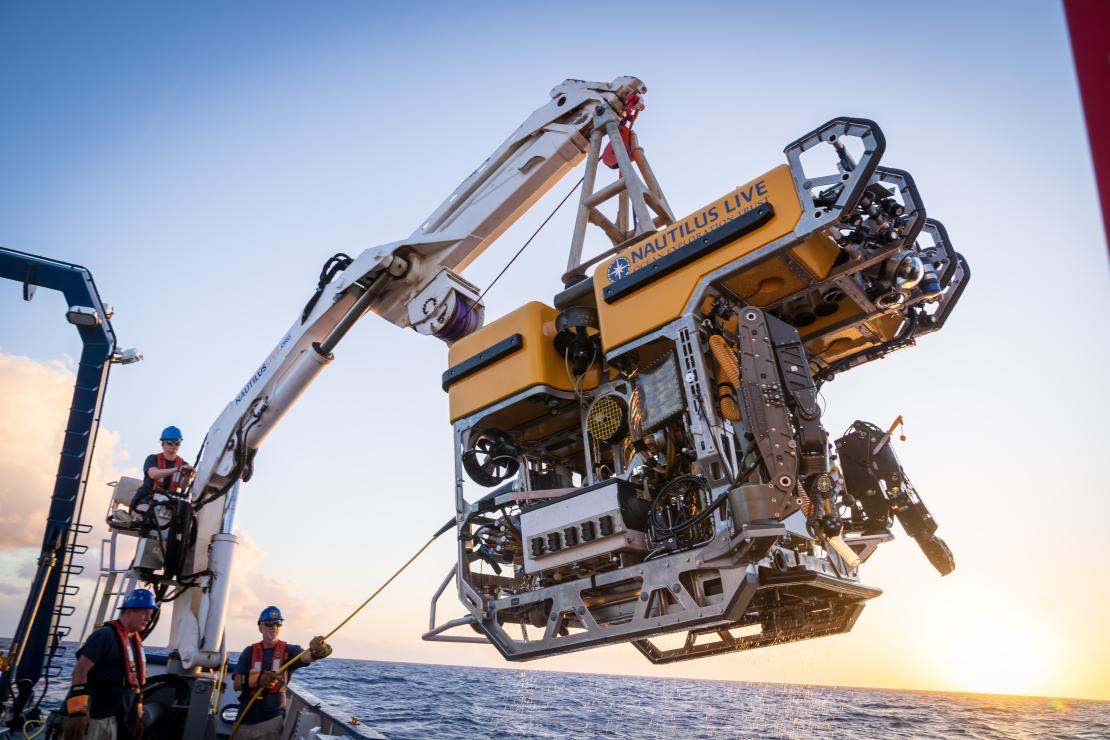
Related News
Join the census
The Ocean Census Alliance unites national and philanthropic marine institutes, museums, and universities, backed by governments, philanthropy, business and civil society partners.
